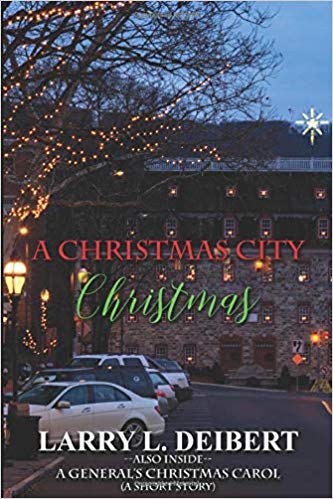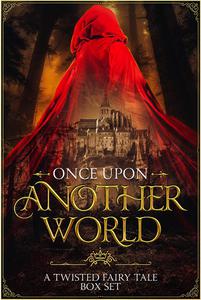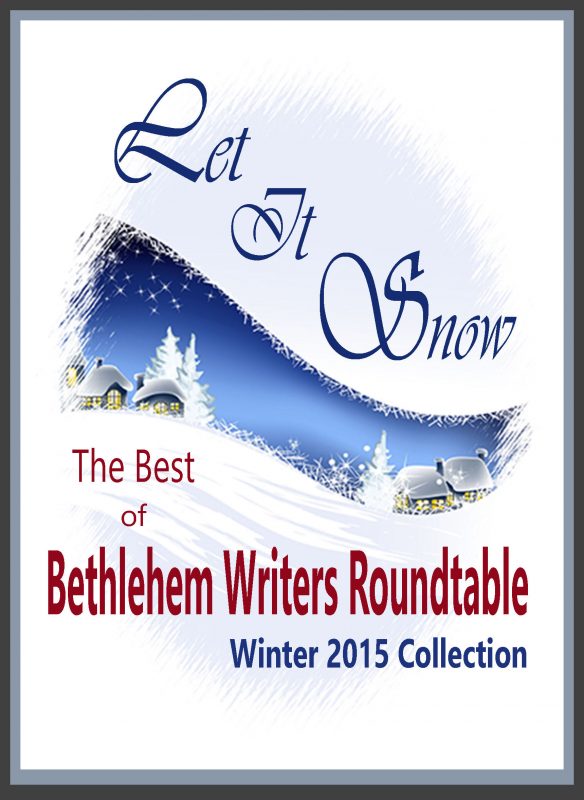Starting a Novel with a Partner
May 3, 2019 by Janet Elizabeth Lynn and Will Zeilinger in category Partners in Crime by Janet Elizabeth Lynn & Will Zeilinger tagged as hard-boiled mysteries, The Skylar Drake Murder Mystery Series, Will Zeilinger, writing partners
My husband, Will Zeilinger and I have been writing together for more than five years. We co-write the Skylar Drake Murder Mysteries, a hardboiled detective series that takes the reader to 1950s Los Angeles and other areas of the west. Our newest book, GAME TOWN, the fifth in the Skylar Drake Murder Mystery series, was released April 15!
Without organization, writing with a partner can be a disaster. Some partners just start writing and go paragraph, by paragraph each checking the paragraphs as they go. With this method, a book would take forever to finish, like a millennium!
So, outlining is the best way to get started on a novel with a partner.
But there are things you need to prepare prior to outlining. The important part is that you both agree and see the story in your heads as it unfolds.
Here is the process we follow:
1. Discuss when and where the story will take place. We chose to follow the seasons of the year. SLIVERS OF GLASS, which started the series, takes place in winter of 1956. Our latest book GAME TOWN takes place in early spring of 1957, with three books in between following the seasons of the year.
2. Research locations both of you would like to use, then pick one. This, we find, is where many stories fall apart. Many partners we know who write together can’t seem to agree. We usually pick 3 locations, Google them for the 1950’s, and pick one that we think will be the most interesting to the reader and us as writers. If we can, we visit these places.
3.Character Development is another thing that partners seem to have difficulty with. We each come up with a couple of character personalities and see which personalities we can use or combine into one. Usually we end up laughing over some of the characters we come up with. Then we get serious.
4. Outlining starts with me. I follow the three-act method. I rough it out then give it to Will. He goes through it, adds scenes, changes a few things and gives it back to me. This “back and forth” continues until we are satisfied, about ten times.
It is important to understand that an initial outline doesn’t mean it is carved in stone. The outline and story morphs as we do research and as the story unfolds. But the outline is something you both agree to then watch it develop.
The results, The Skylar Drake Murder Mystery series, SLIVERS OF GLASS, STRANGE MARKINGS, DESERT ICE, SLICK DEAL , and just released GAME TOWN.
Janet
The Skylar Drake Murder Mystery Series
0 0 Read more
Vintage 1950s Cocktail Parties
April 3, 2019 by Janet Elizabeth Lynn and Will Zeilinger in category Partners in Crime by Janet Elizabeth Lynn & Will Zeilinger, Writing tagged as 1950s Research, Janet Elizabeth Lynn, The Skylar Drake Murder Mystery Series, Vintage Cocktail Parties, Will Zeilinger
My husband Will Zeilinger and I co-write the Skylar Drake Murder Mysteries. A hardboiled detective series that takes the reader to 1950s Los Angeles and other areas of the west. Our next book, GAME TOWN, the fifth of the Skylar Drake Murder Mystery series, is available now!

Cocktail Parties were all the rage in the 1950s and into the 60s. It was a chance to get dressed up, relax with friends, socialize, impress others and gossip. What would the 1950 have been without Cocktail Parties?
Private cocktail parties were held at people’s homes. They would invite the neighbors, friends, business associates, their boss, or co-workers. There were all kinds of reasons for a get together. We call it networking today, but on a much smaller scale.
For the host, the food and drinks served were very important. The beverages and the canapés complimented each other. The rule of thumb was tart and salty blended best with gin, while heartier foods went with whiskey and beer.

Below are suggestions for the hostess:
Champagne: caviar, chicken l’orange, hearts of palm salad
Highballs: liver paté, stuffed eggs, cheese balls,
Whiskey Cocktail: cheese tarts, curried peanut butter rolls
Gin Cocktail: marinated vegetables, asparagus tips in ham rolls
Beer: stuffed olives, cheese balls, turnovers
Sherry: Apple, raisin and cream cheese balls, bacon balls, chipped beef rolls with mushrooms, stuffed mushrooms, peanut rolls, peanut butter rolls, peanut butter tarts, nut and stem ginger tarts, ham tidbits, chicken, lobster or liver paste puffs, turnovers, cheese straws, sausage tidbits and smoked hickory cheese balls.
Whiskey cocktails: guacamole, anchovy fillet tidbits, bacon and curried peanut butter rolls, East Indian beef balls, clam spread tidbit, pizzas–miniature, smoked oysters in blankets, Camembert cheese and ham tarts, chicken livers and bacon, roast beef snacks, kippered herring and bacon rolls and meat balls (beef in blankets).
Gin cocktails: guacamole, anchovy ham rolls, artichoke hearts, asparagus tips in ham rolls, onion and cheese snacks, onion egg snacks, stuffed olives, codfish balls with cheese, sardine onion snacks, sausage in blankets, sardine macaroni snacks, stuffed dill pickles and marinated vegetables.

Beer: Anchovy fillet tidbits, stuffed olives, cheese straws, turnovers, cocktail frankfurters and sauerkraut, garlic popcorn, cheese balls, chipped beef and sardine rolls, kippered herring and bacon rolls, and tongue rolls or pinwheels.”
A full-size bar would offer all cocktails. But smaller bars in individual homes usually had only a sampling to offer. Thus, making tidbits easier to manage.
Of course, a fruit and cheese plate was a good finish for all cocktail parties

0 0 Read more
Critique Groups or Beta Readers?
March 3, 2019 by Janet Elizabeth Lynn and Will Zeilinger in category Partners in Crime by Janet Elizabeth Lynn & Will Zeilinger tagged as Beta Readers, critique groups, editing, Proofreading
What’s the difference and why do we need them anyway?
by
Will Zeilinger
Janet and I co-write the Skylar Drake Mystery series and we’ve had people say to us, “I guess you proofread each other’s work.”
Both of us are intimately involved in the writing and initial editing, as such, we can get too close to it and sometimes miss big issues. That’s why we would never submit something for publication without the help of critique groups and/or beta readers to assist us.
What exactly, are we talking about? Maybe this will help.

Beta Readers are individuals who evaluate your manuscript by reading it through and telling you about flaws or holes in your story. Beta has come to mean a sort of testing phase and that is what a beta reader does. You have them read your work as a way of testing it for readability, and overall structure.
A Critique Group is made up of several people (usually writers, but sometimes includes readers) who meet together. You as an author, provide a short story or maybe a chapter from a novel for the group to read and critique.
Let me stop here—The very word ‘critique’ is based on the word criticism, and in our culture that word has taken on a negative connotation, since to criticize someone’s writing usually means to tear it apart. However, the dictionary definition of the word ‘critic’ indicates it is “someone who passes judgement on something, usually in reference to art and literature.”
That is a neutral statement…judgement can be either positive or negative, or a combination of both. So, it’s not, necessarily a bad thing.
This may all sound scary, especially to a beginning author. They’re taking your baby away from you and who knows what they will return in its place? Will your prose become something unrecognizable? After all the hours, days, and nights of sweat and deprivation…will they drop a piece of crap in your lap?

Here’s the truth: Having another set of eyes and an impartial opinion of your work-in-progress is an essential step if you are planning to self-publish, but it can also help you in the quest to secure an agent or publisher if your plan is to go the traditional route with your work.
“But it’s gonna hurt!” you say. Don’t look at it that was. This is where you have the power to accept or reject any suggestions or critiques of your work.
As a career graphic designer, I remember vividly, the first critiques in my college classes. We all posted our concepts on the wall of the classroom. The professor would walk back and forth, making “hmmph” and “umm” noises before turning and asking the rest of us in class what we thought of each piece. There were, of course, a variety of reactions to them.
As students, we’d take each into consideration. I didn’t always accept their suggestions, but I needed to hear and see it because I’d been too close to my work to be objective.
One of the things my professor said that I’ve carried over into my writing was when he would hold his hand over a portion of the drawing and ask, “Does this still work without this part?”
I found that eliminating nonessential pieces has helped streamline my work and make it read easier.
I needed to learn to accept constructive, positive critiques in either my designs or my writing, and discount those that were not pertinent or objective.
Letting others check your work-in-progress is a great way to improve your writing and make friends too. Your choice: Beta Readers or Critique groups or both. Find the right one for you.
1 0 Read moreTelephone Booths in the 1950s by Will Zeilinger
February 3, 2019 by Janet Elizabeth Lynn and Will Zeilinger in category Partners in Crime by Janet Elizabeth Lynn & Will Zeilinger tagged as Fads, Researching Historical Fiction, the 1950s
Ah, the convenience of a smartphone. Almost all of us have one (or more) of these tiny mobile computers and telephones, in one.
Believe it or not, the first mobile telephone call from a hand-held device wasn’t made until April 3, 1973. Cellular phones and smartphones were still decades in the future.
Now, let’s take a look back to the mid-1950s and see what calling home entailed.

If you were not at home, the first order of business was to find a telephone, and you had better have had a pocketful of change because you paid to talk.
In the U.S., one could find “pay phone” inside a telephone booth or just “phone booth” for short, as they were called, on many street corners and in most commercial establishments. On the street, the ubiquitous phone booth featured a folding glass door that afforded some privacy and protection from the elements. They were not air-conditioned, but when you stepped inside and closed the door, an overhead light would come on. That feature was especially helpful at night. By the mid-1950s, most were upgraded from a wood and glass structure to a weatherproof glass and aluminum booth that was large enough for one (maybe two, if you were friends).
If you’re too young to have seen one in person, you’ve no doubt, seen them in old movies and TV shows.

They were found inside almost any hotel, train station, bank, restaurant or office building. You would have seen rows of wooden phone booths lining a wall somewhere near the entrance. Many of them had a seat inside for long conversations. During breaks between the action at conventions or meetings, people would line up to use the half dozen or so telephones in larger hotels, and in smaller hotels, there may have been two or three.
Today many hotels and convention spaces have mysterious empty areas that will cause the visitor to wonder the reason behind the wasted space. The answer is telephone booths once stood in those places before they were removed because they were no longer needed.

To make a call you would first deposit a nickel or dime in one of the round holes at the top. “Dial” it on the rotary dial . . . one digit at a time. A live telephone operator would come on the line and tell you how much money to put in, based on the number. If you didn’t know the person’s number, you’d look up the person by name from the telephone directory book, suspended under the phone. If you needed to make a long distance call, the live operator would handle that for you as well.

Since the 1950s were part of a decade of fads, one popular fad was “Phone Booth stuffing.” The point of this was to see how many people would fit into a phone booth designed for one person. From what I could learn, the record for cramming the most people into a standard sized telephone booth was 25. This was accomplished by a group of South African college students.
Too many people? You want a little privacy when you make a phone call? In today’s culture, it is becoming increasingly difficult to find privacy in a public place when you need to have a conversation (except maybe, in your car) I’m sure you’ve been in a restaurant or standing in a checkout line, and had to endure someone’s inane conversation right behind you or next to your ear. Well—good news! Some establishments are resurrecting telephone booths by providing an enclosed compartment with a comfortable seat and a door (see phone booth) for people to make or take private cell calls without having to go out to the parking lot. What goes around,comes around.
2 0 Read more
Partnering in Writing: Tripping to Places & Times by Janet Elizabeth Lynn
January 3, 2019 by Janet Elizabeth Lynn and Will Zeilinger in category Partners in Crime by Janet Elizabeth Lynn & Will Zeilinger tagged as co-writing, Janet Elizabeth Lynn, Research for Writers, traveling, Will Zeilinger, writing partners
My husband, Will Zeilinger and I co-write the Skylar Drake Murder Mysteries. A hardboilded detective series that takes the reader to 1950s Los Angeles and other areas of the west. Our next book, GAME TOWN, will be available Spring 2019. Needless to say, at this time we are in the throes of writing and researching!
Someone said, “You can’t write about old Hollywood unless you experience it.” This is so true! Neither my husband nor I are from LA and didn’t experience gang infested 1950s LA. So we take field trips, such as the Raymond Chandler’s L.A. Tour. We research the clubs and hangouts of the time then visit the nightclubs, hotels, and restaurants (Turns out to be loads of fun).

To begin our journey for this series, (even before we started writing), we took a trip to San Diego and the Sheriff’s Museum. We called ahead and scheduled interviews with several retired policemen, including one that worked the L.A. beat in the late 1950s. This gentleman was a wealth of information on police activity in Hollywood and the surrounding area. Our first novel in the series, SLIVERS OF GLASS, takes place in spring, 1955 in Santa Rosa.

Research for STRANGE MARKINGS was mostly gathered on our trip to Molokai, Hawaii. Natives we interviewed told us about the many legends and what it was like living in the area in summer, 1955. As each person talked about their experiences, plots and subplots emerged for us.

We found people living in the areas at the time each book took place and interviewed them. Since DESERT ICE takes place in Las Vegas, Fall, 1955. We interviewed a dancer who worked on the, then new, strip. Will also had a college buddy who lived in Boyle Heights in the 50s, so we interviewed him and his sister for the same book where the first murder takes place.

SLICK DEAL takes place in Winter of 1955, is base on interviews with local people in Signal Hill, and Avalon, on Catalina Island all in southern California. After lengthy interviews my husband and I commented how the spoken word conjures up images and ideas so easily.
GAME TOWN, our fifth book in the series due for release in April 2019, takes place in spring, 1956. We decided to keep it in Hollywood for the first time. We recently took an afternoon and drove around old Hollywood looking for body dumps that would have been in existence in 1956. We stumbled upon a lovely apartment building, El Royale, circa 1929. We weren’t allowed in the building without permission from a resident, so we drove around and looked it up on the internet when we got home. What an amazing place for several scenes!
Whether writing about faraway places, or in a different era, visiting locations or places that imitate the area helps us develop plots. Interviews with those familiar with the time or location add “flavor” to our story. So if you are writing about a famous lodge in Switzerland, take a trip to a Ski Lodge close to you when it snows.
The results of our research? SLIVERS OF GLASS, STRANGE MARKINGS, DESERT ICE, SLICK DEAL and coming soon, GAME TOWN . . . and yes, we’re still married.
Website: www.janetlynnauthor.com
Blog: www.themarriedauthors.blogspot.com
Affiliate Links
A Slice of Orange is an affiliate with some of the booksellers listed on this website, including Barnes & Nobel, Books A Million, iBooks, Kobo, and Smashwords. This means A Slice of Orange may earn a small advertising fee from sales made through the links used on this website. There are reminders of these affiliate links on the pages for individual books.
Search A Slice of Orange
Find a Column
Archives
Featured Books
A CHRISTMAS CITY CHRISTMAS
Will they have a normal Christmas? Probably not.
More info →ONCE UPON ANOTHER WORLD: A Twisted Fairy Tale Box Set
Not all fairy tales are as they appear.
More info →COWBOY KARMA
Karma is a good judge of character, and you my friend, are screwed
More info →THE GOOD GIRL PART ONE
Gabriella Townsend is by all definition a "Good Girl." Her life is about to change.
More info →Newsletter
Contributing Authors
Search A Slice of Orange
Find a Column
Archives
Authors in the Bookstore
- A. E. Decker
- A. J. Scudiere
- A.J. Sidransky
- Abby Collette
- Alanna Lucus
- Albert Marrin
- Alice Duncan
- Alina K. Field
- Alison Green Myers
- Andi Lawrencovna
- Andrew C Raiford
- Angela Pryce
- Aviva Vaughn
- Barbara Ankrum
- Bethlehem Writers Group, LLC
- Carol L. Wright
- Celeste Barclay
- Christina Alexandra
- Christopher D. Ochs
- Claire Davon
- Claire Naden
- Courtnee Turner Hoyle
- Courtney Annicchiarico
- D. Lieber
- Daniel V. Meier Jr.
- Debra Dixon
- Debra H. Goldstein
- Debra Holland
- Dee Ann Palmer
- Denise M. Colby
- Diane Benefiel
- Diane Sismour
- Dianna Sinovic
- DT Krippene
- E.B. Dawson
- Emilie Dallaire
- Emily Brightwell
- Emily PW Murphy
- Fae Rowen
- Faith L. Justice
- Frances Amati
- Geralyn Corcillo
- Glynnis Campbell
- Greg Jolley
- H. O. Charles
- Jaclyn Roché
- Jacqueline Diamond
- Janet Lynn and Will Zeilinger
- Jeff Baird
- Jenna Barwin
- Jenne Kern
- Jennifer D. Bokal
- Jennifer Lyon
- Jerome W. McFadden
- Jill Piscitello
- Jina Bacarr
- Jo A. Hiestand
- Jodi Bogert
- Jolina Petersheim
- Jonathan Maberry
- Joy Allyson
- Judy Duarte
- Justin Murphy
- Justine Davis
- Kat Martin
- Kidd Wadsworth
- Kitty Bucholtz
- Kristy Tate
- Larry Deibert
- Larry Hamilton
- Laura Drake
- Laurie Stevens
- Leslie Knowles
- Li-Ying Lundquist
- Linda Carroll-Bradd
- Linda Lappin
- Linda McLaughlin
- Linda O. Johnston
- Lisa Preston
- Lolo Paige
- Loran Holt
- Lyssa Kay Adams
- Madeline Ash
- Margarita Engle
- Marguerite Quantaine
- Marianne H. Donley
- Mary Castillo
- Maureen Klovers
- Megan Haskell
- Melanie Waterbury
- Melissa Chambers
- Melodie Winawer
- Meriam Wilhelm
- Mikel J. Wilson
- Mindy Neff
- Monica McCabe
- Nancy Brashear
- Neetu Malik
- Nikki Prince
- Once Upon Anthologies
- Paula Gail Benson
- Penny Reid
- Peter Barbour
- Priscilla Oliveras
- R. H. Kohno
- Rachel Hailey
- Ralph Hieb
- Ramcy Diek
- Ransom Stephens
- Rebecca Forster
- Renae Wrich
- Roxy Matthews
- Ryder Hunte Clancy
- Sally Paradysz
- Simone de Muñoz
- Sophie Barnes
- Susan Squires
- T. D. Fox
- Tara C. Allred
- Tara Lain
- Tari Lynn Jewett
- Terri Osburn
- Tracy Reed
- Vera Jane Cook
- Vicki Crum
- Writing Something Romantic
Affiliate Links
A Slice of Orange is an affiliate with some of the booksellers listed on this website, including Barnes & Nobel, Books A Million, iBooks, Kobo, and Smashwords. This means A Slice of Orange may earn a small advertising fee from sales made through the links used on this website. There are reminders of these affiliate links on the pages for individual books.


































































